You’ll think I’m nuts to recommend an admittedly “janky” digital camera that dates all the way back to 1999. During the original Polaroid company’s final years before closing its doors in 2001, I wrote the user manuals for its PDC line of mass-market digitals.
I had just heard about digital-infrared photography, and one day, asked the company’s excellent development engineer if any of his cameras might be good at it. He told me to try the PDC-700. For two reasons:
- It was one of the first– and most carefully engineered– digitals the company had begun to sell in drug stores and retailers like Walmart. (A few years before the PDC-700, Polaroid created its unusual– and now quite collectible– PDC-2000 and -3000 “Digital Negative” cameras. But they never caught on.)
- And to minimize costs, they had not installed a “hot mirror” in front of the sensor to block incoming infrared rays.
As might be said today, “So began my IR journey.”
Mixed-Bag Specifications
Back then, Polaroid was playing catch-up in a relatively new digital market. And the camera’s most important specifications weren’t entirely earth-shattering:
- A 0.8-megapixel 1/3” CCD sensor. (Yes… under 1 megapixel!)
- Six image resolution/fineness choices: three VGA 640 x 480 and three XGA 1024 x 1068 ( VGA “Superfine” stores about 5 images per megabyte of memory and XGA “Superfine,” about 3).
- And a f/3.5-5.6 two-zone lens (macro from 8 to 18 inches and everything else from 18 inches to infinity).
There were pluses, though:
- 4 megabytes of internal storage to supplement its Compact Flash slot.
- The lack of an IR-hostile “hot mirror.”
- Decent external camera controls (including an EV button for adjusting exposure values from -2 to +2 in increments of 0.5).
- White-balance settings.
- An LCD-brightness adjustment (which doesn’t help much on sunny days).
- And use of widely available AA batteries.
I bought one in the company store (discounted below its $350 MSRP of course), and took it to the gorgeous New England Botanic Garden at Tower Hill, in Boylston, Massachusetts. I’d already snagged an IR bandpass filter for not much coin and attached it to the camera using thick, double-sided, mounting tape from the local hardware store:
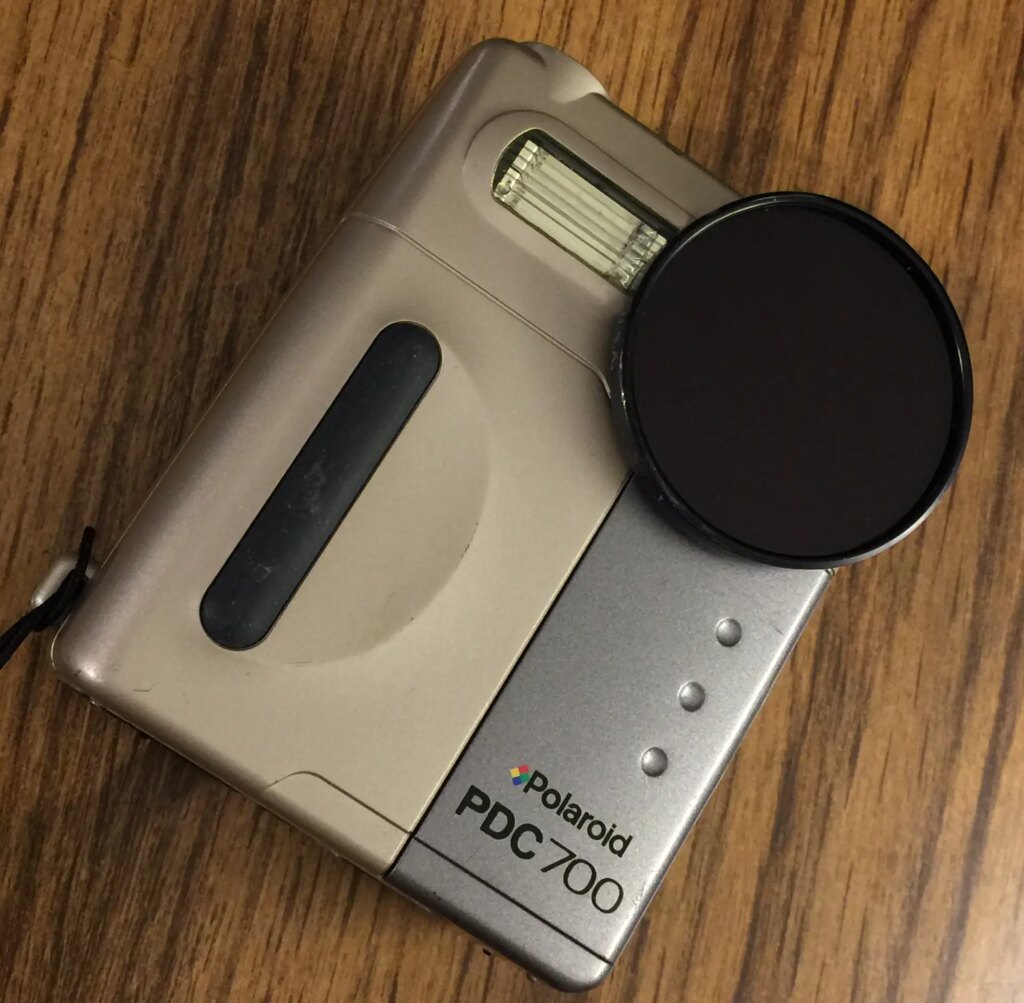
But Lovely IRs!
The camera turned out to be so infrared-sensitive that I could shoot hand-held IRs even from moving vehicles and odd positions. For example, I sat on the ground to make these Tower Hill steps look much taller than they really are. (When I showed the photos to the folks at Tower Hill, they offered an exhibit, and I took them up on it.):
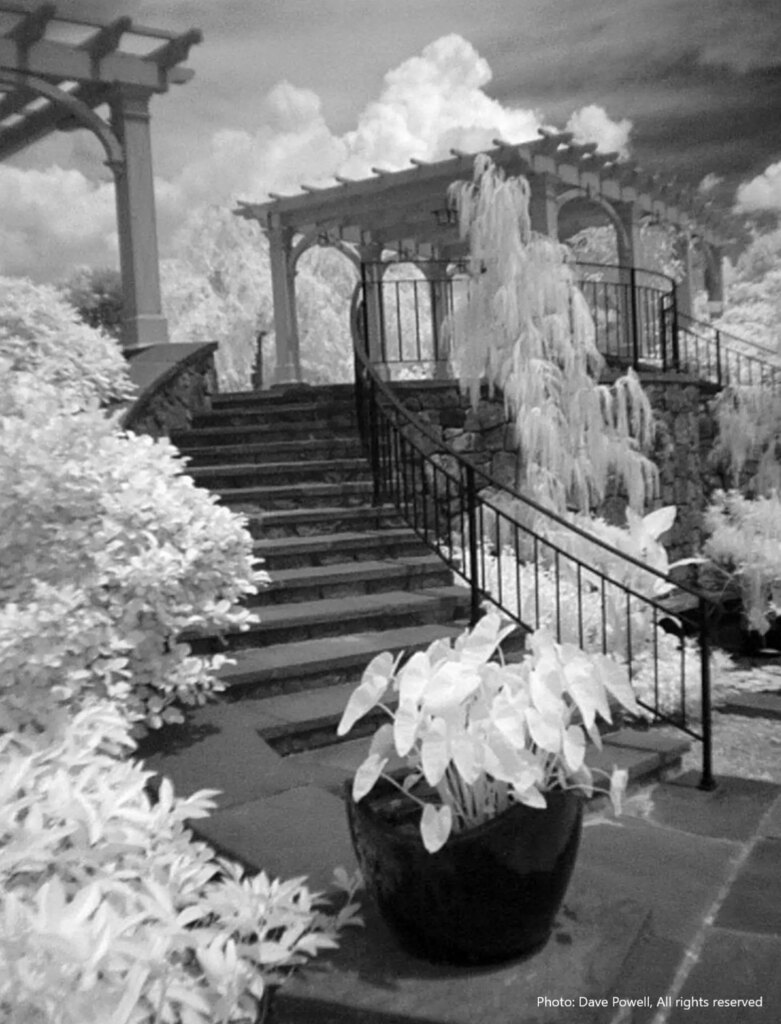
Here are a few more scenes from Tower-Hill (and then, a few other places):
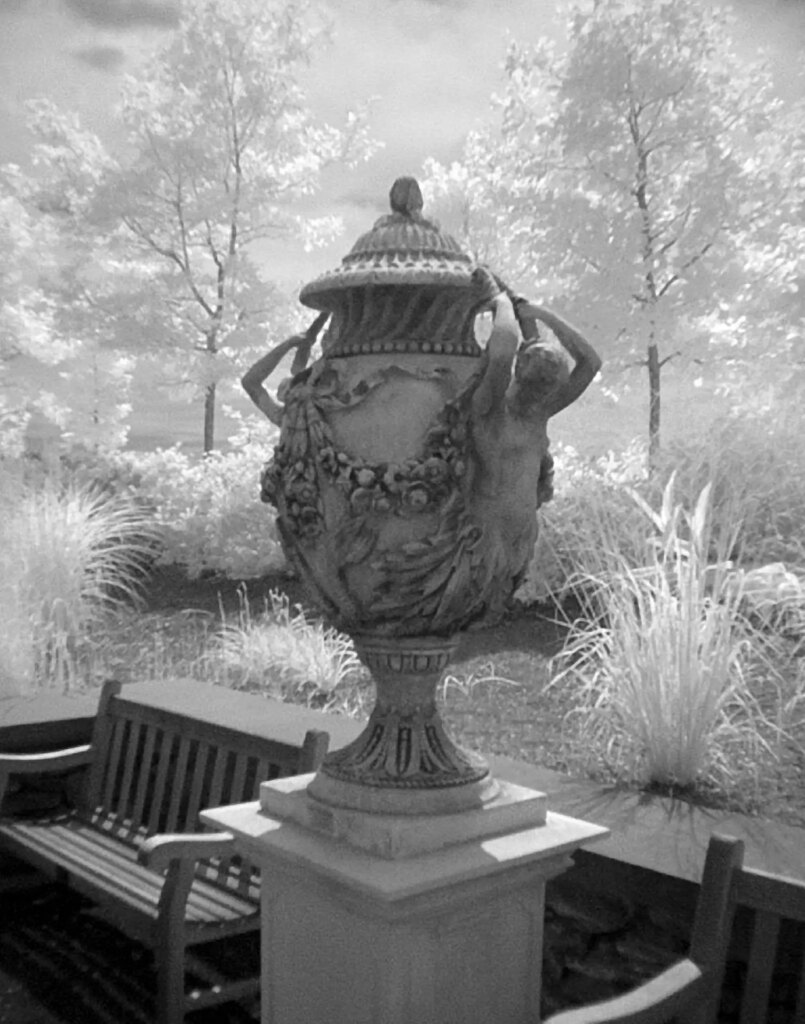
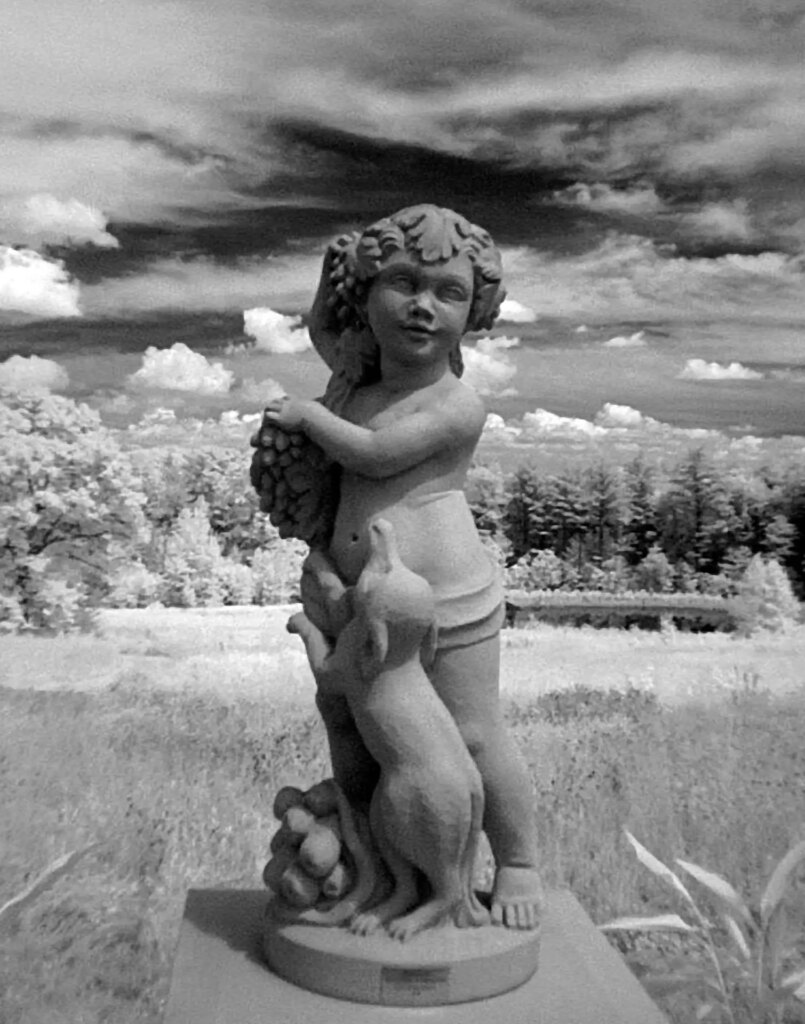
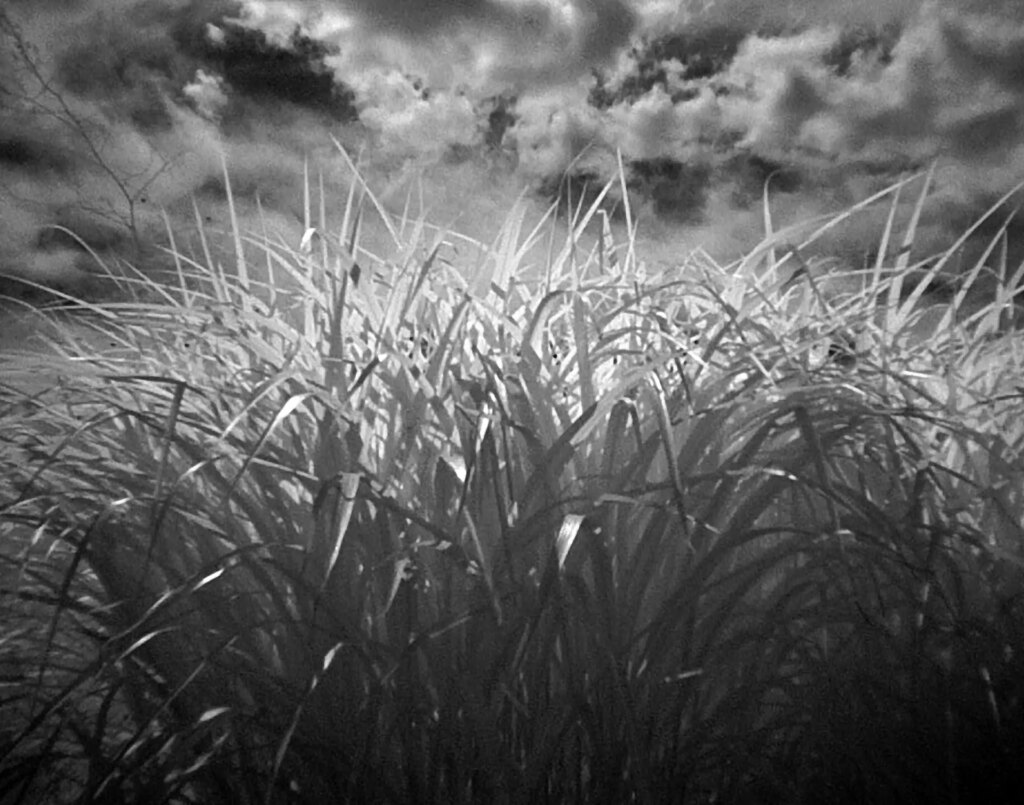
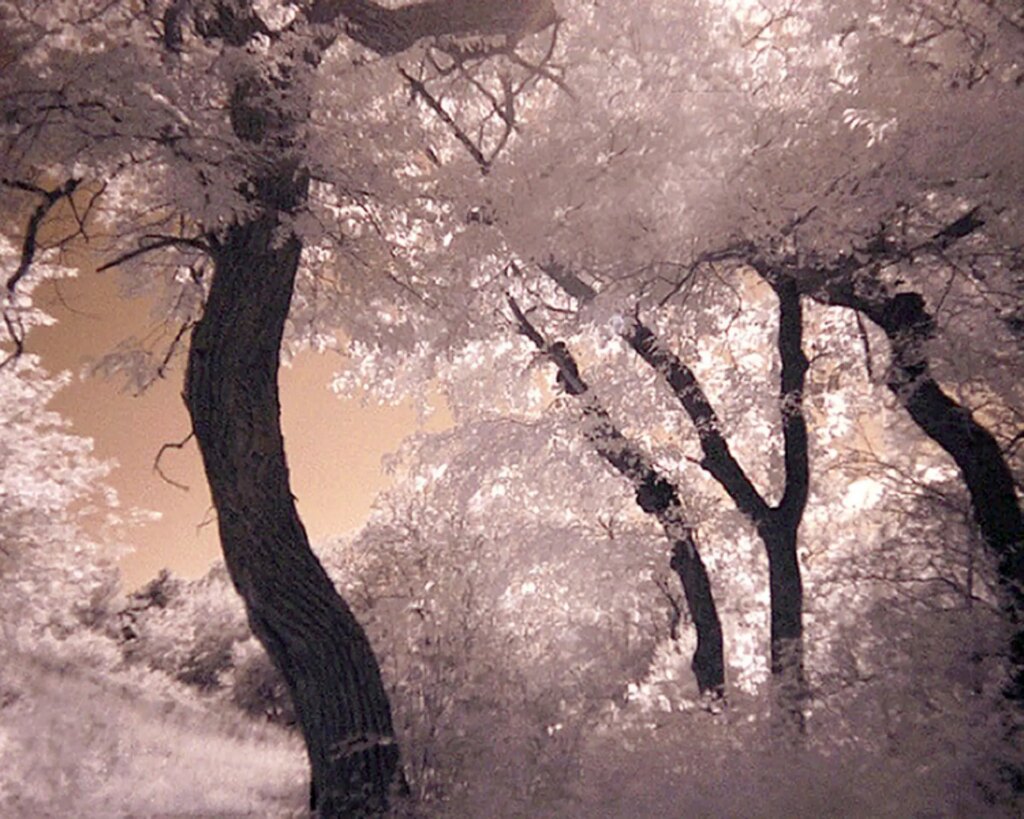

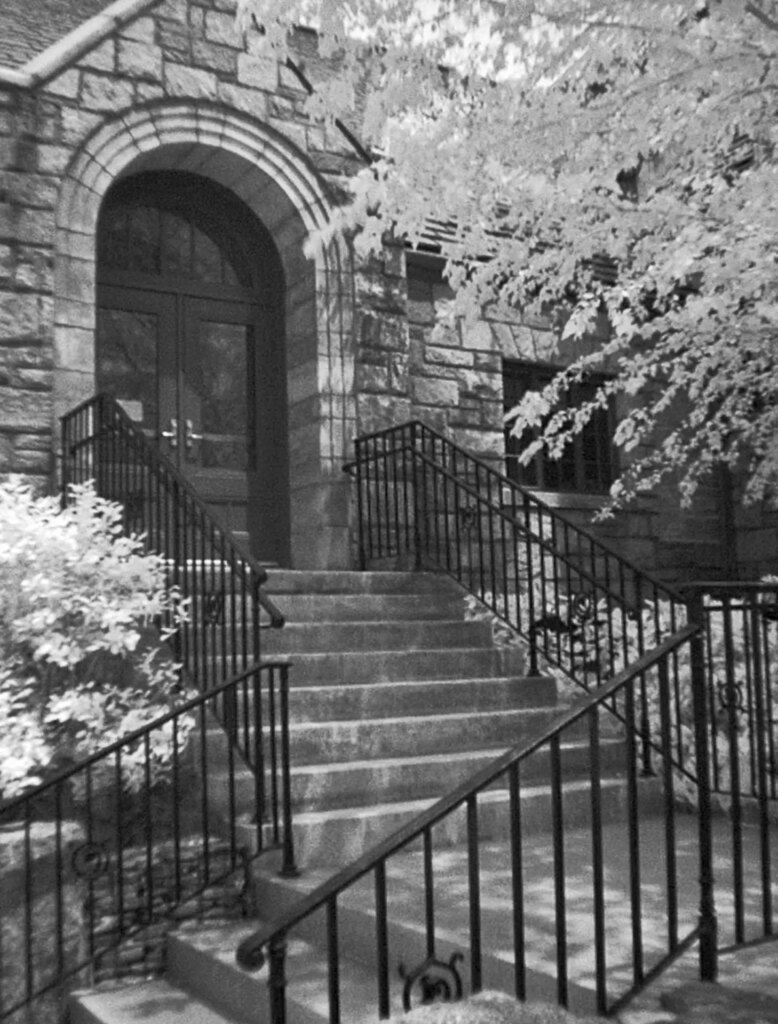
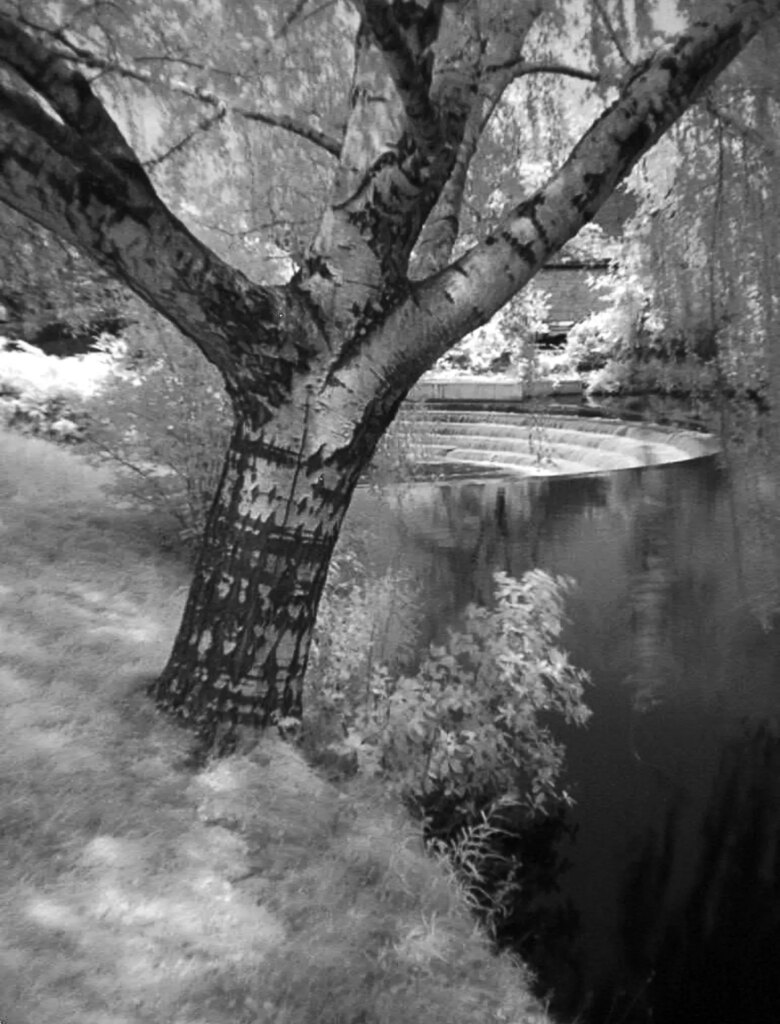
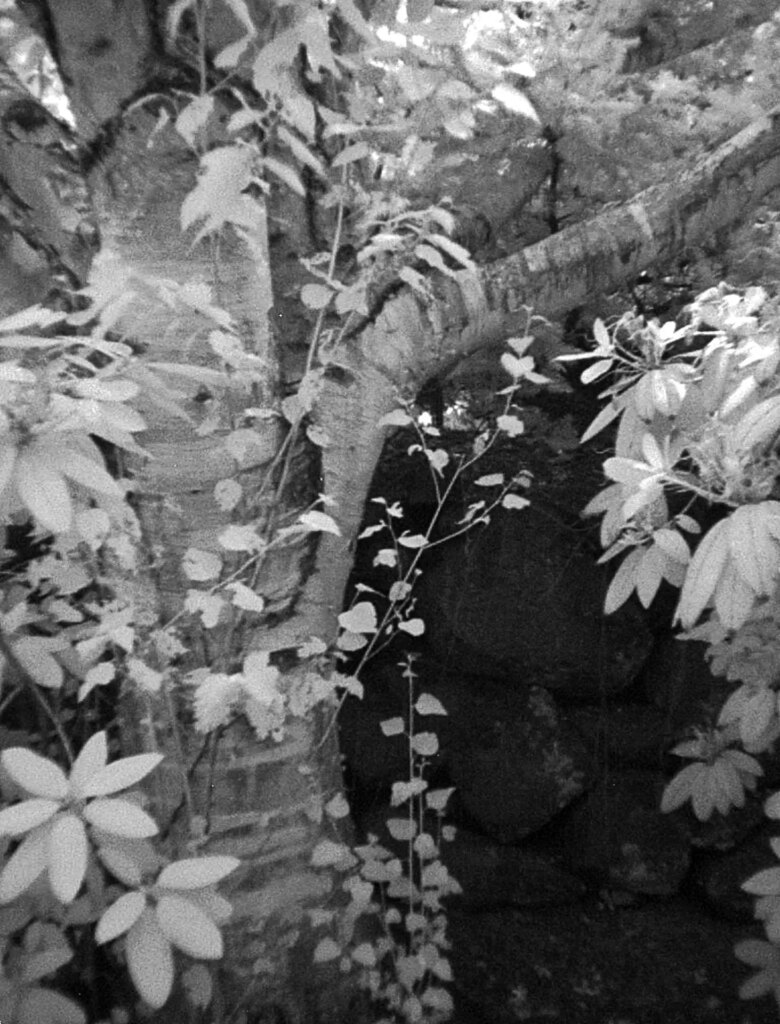
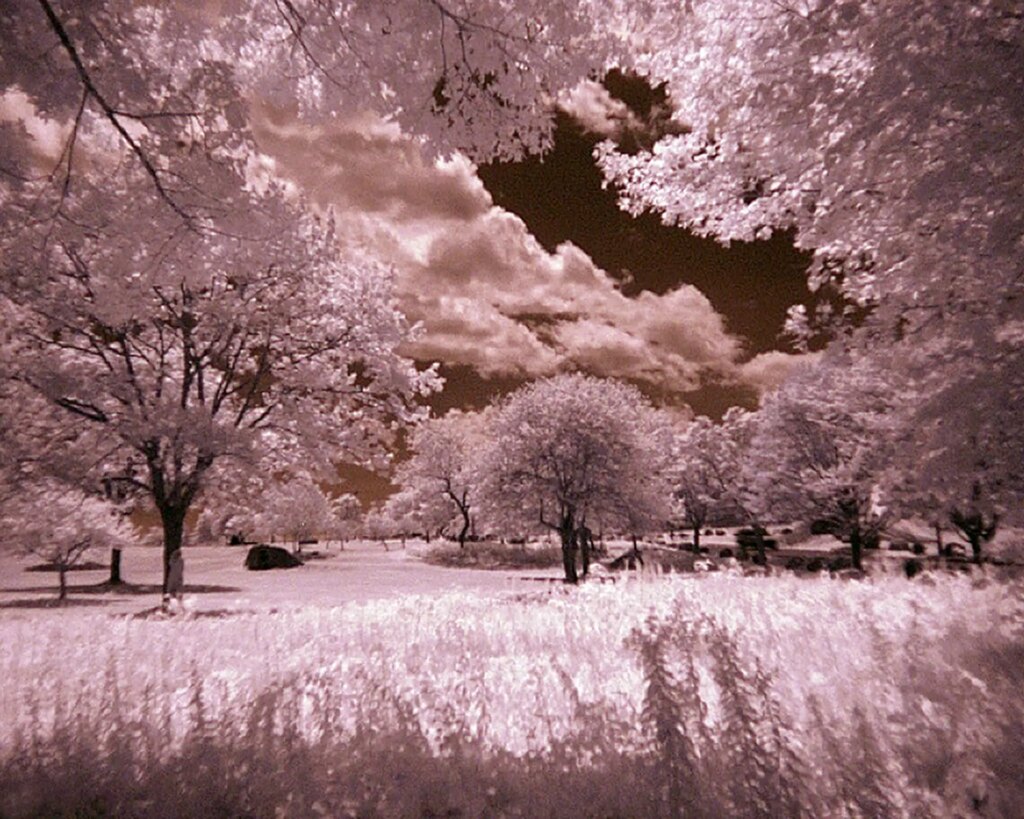

Yes, they are definitely impressionistic. But at the same time, lovely! My exhibit was called “The Invisible Garden.” The Boston Globe newspaper reviewed it favorably, and I sold a few prints at sizes ranging from 8×10 to 16×20! (For info about how I did that with sub-megapixel files, see the PDC-700 portion of this article.)
And several more IR exhibits quickly followed in and around the Winchester area.
Janky is as Janky Does
Dating from digital’s earliest days, the camera is janky, with:
- Much lower-res images than we are used to seeing today.
- A menu system of charming Atari-like icons (with an admittedly useful one for copying files from the camera’s built-in storage to an installed CF card).
- Somewhat non-intuitive button functions and labeling (for instance, depending on whether you’re reviewing or shooting images, the “SFN” button either erases individual files from memory or selects from six resolution/fineness settings).
- Some difficulty handling high dynamic range.
- A single shutter speed of probably around 1/60 sec (several “camera-museum” websites claim the shutter goes from 1/10,000 to 30 sec, but… um… NOPE!).
- And so little EXIF data in its files that modern readers won’t even display the camera name (the only thing they do show is image resolution).
So why do I still recommend the PDC-700 for some users and applications?:
- Though small, it’s images punch well above the camera’s dirt-cheap online price. With patience, one can snag it for $10 or less on the ‘Bay. This makes it an excellent, inexpensive entrée into the wonderful world of IR! (Note: In an upcoming article, I’ll use the camera to test cheap alternatives to expensive IR bandpass filters.)
- The camera’s small files (both IR and regular) remain well-suited to applications like homemade greeting cards and the increasingly popular “miniature” photo prints. And as described in my above-linked article, they can even be made into large prints.
- And the PDC-700 is a great first digicam for very young, budding photographers. (I should know… I’ve given two of them as presents!)
–Dave Powell is a Westford, Mass., writer and avid amateur photographer.
Share this post:
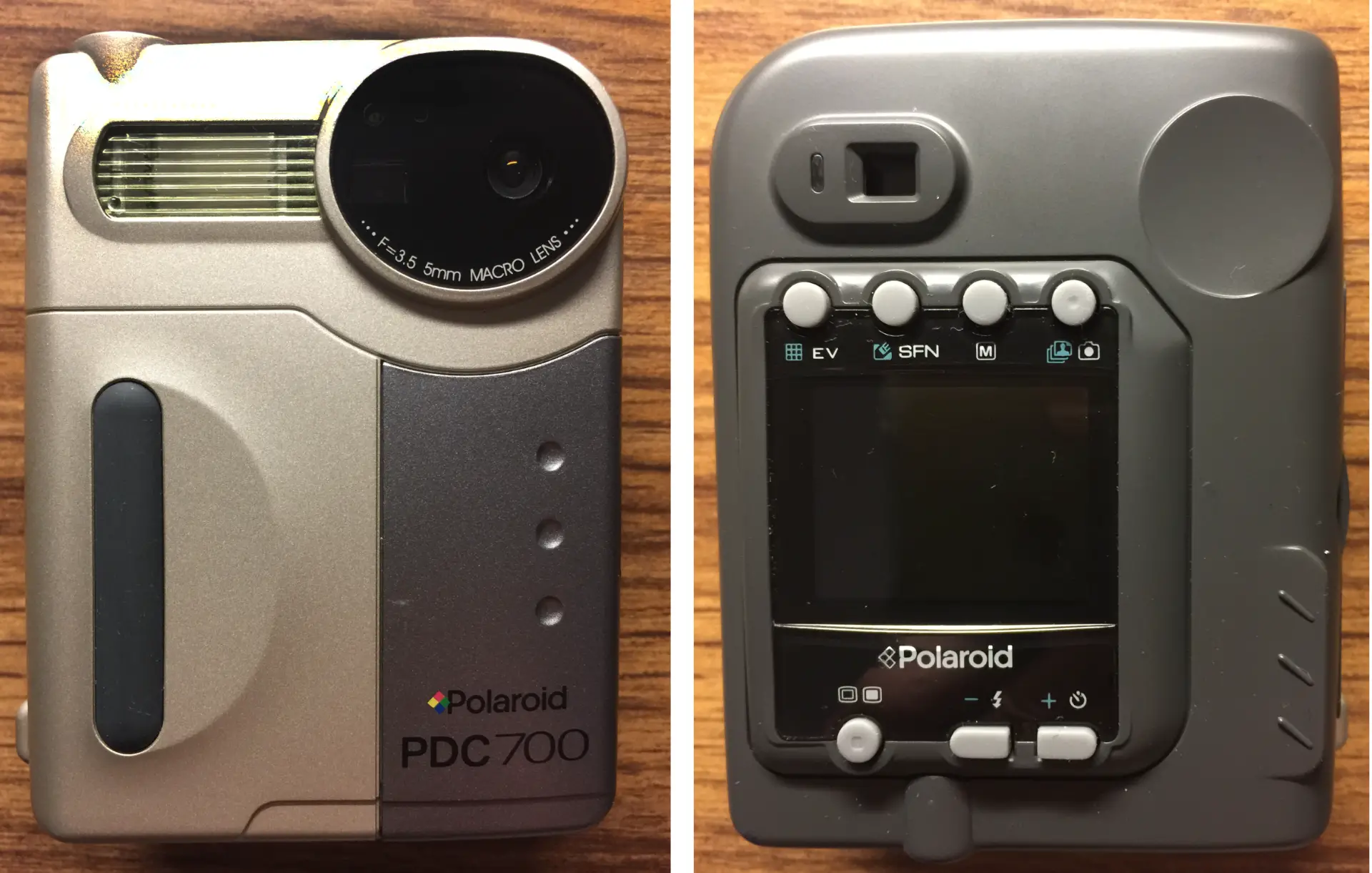
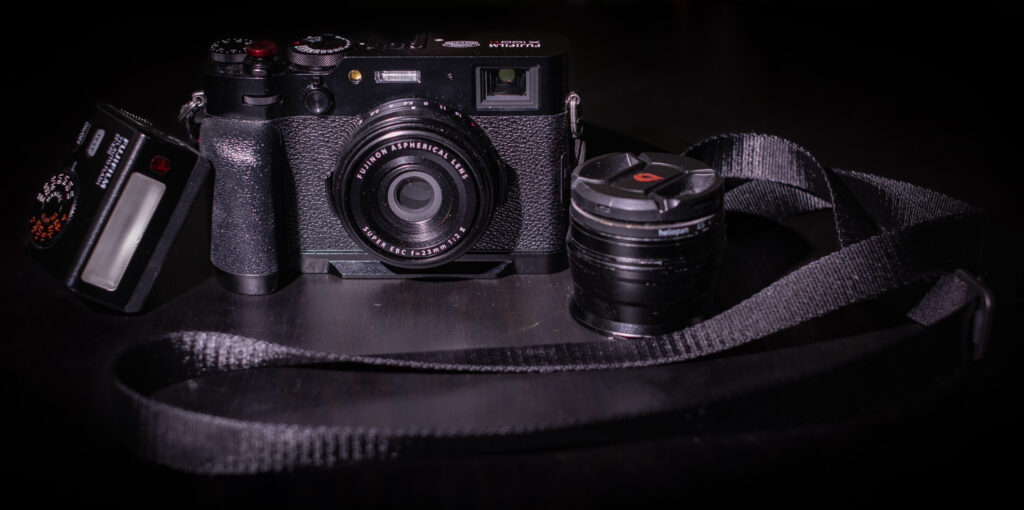
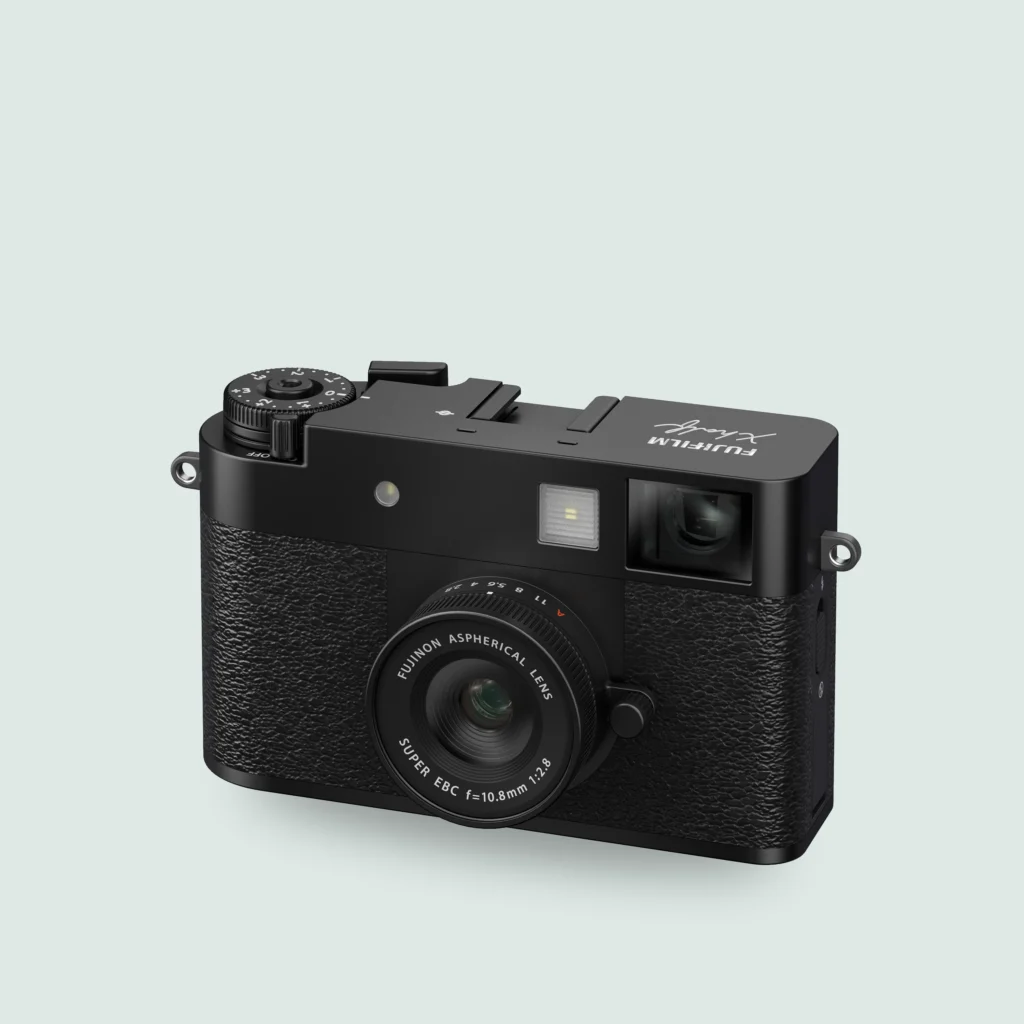
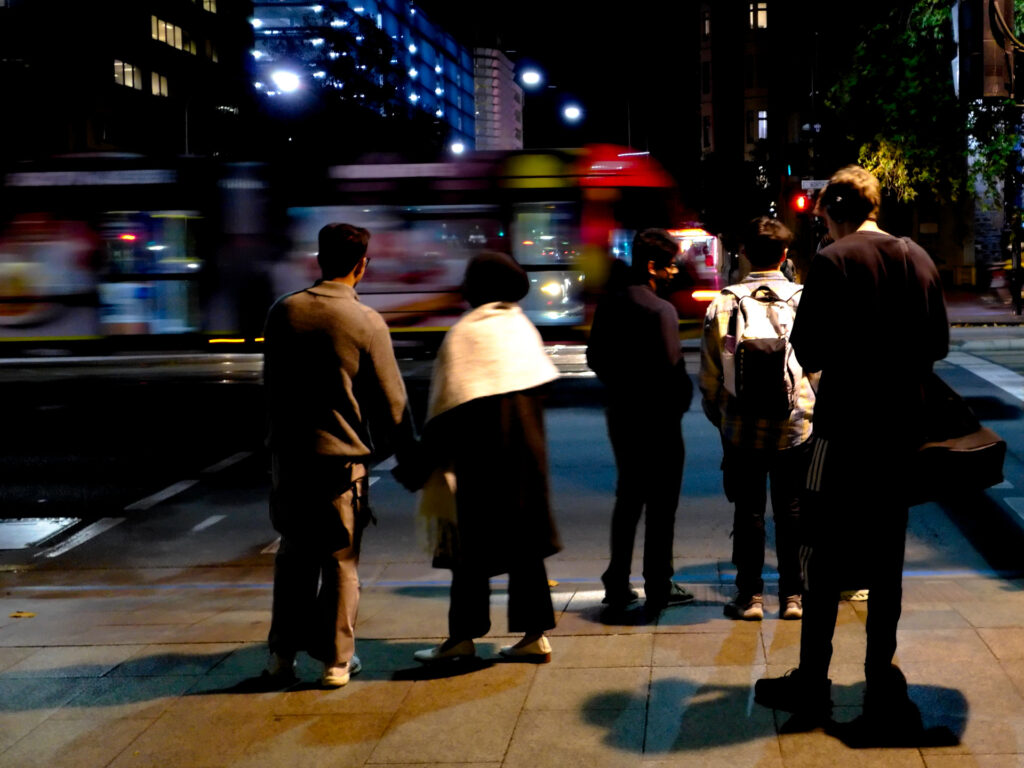
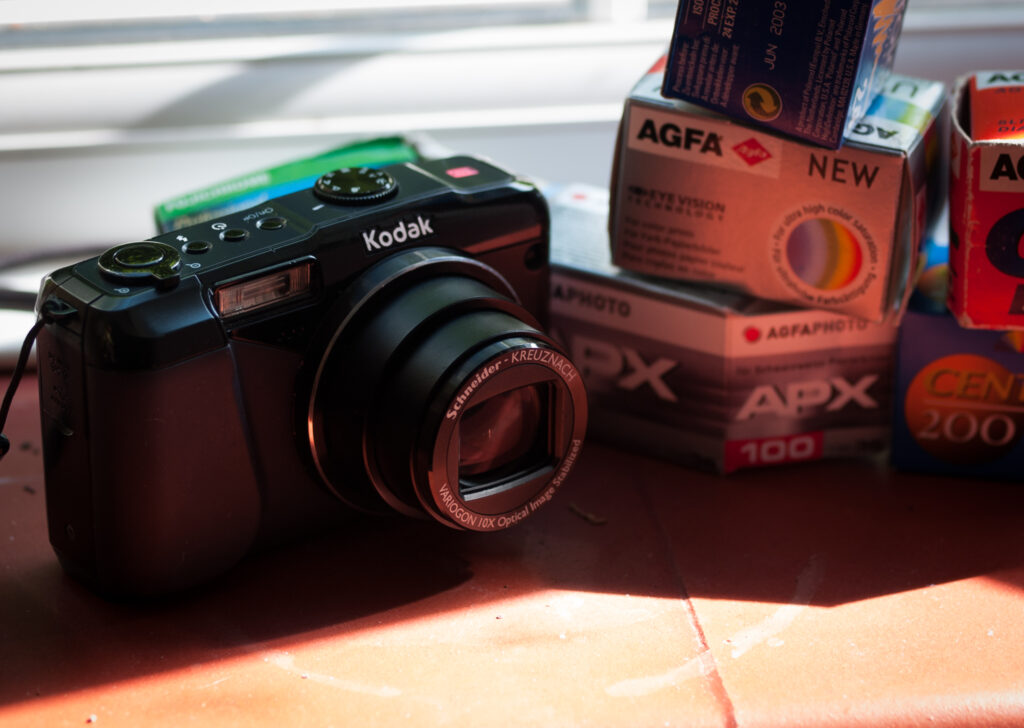




Comments
Ibraar Hussain on Polaroid’s PDC-700 – A little old digicam with a big secret (Shot for Jankuary)
Comment posted: 02/02/2024
What a brilliant article and the photos just blew me away - masterful IR work!
What can I say ?
Comment posted: 02/02/2024
Comment posted: 02/02/2024
Murray Leshner on Polaroid’s PDC-700 – A little old digicam with a big secret (Shot for Jankuary)
Comment posted: 02/02/2024
Comment posted: 02/02/2024
Lance Rowley on Polaroid’s PDC-700 – A little old digicam with a big secret (Shot for Jankuary)
Comment posted: 03/02/2024
Comment posted: 03/02/2024
Gary Smith on Polaroid’s PDC-700 – A little old digicam with a big secret (Shot for Jankuary)
Comment posted: 03/02/2024
Comment posted: 03/02/2024
Marc on Polaroid’s PDC-700 – A little old digicam with a big secret (Shot for Jankuary)
Comment posted: 03/02/2024
Keep writing, greatly enjoy them.
Comment posted: 03/02/2024
Scott Gitlin on Polaroid’s PDC-700 – A little old digicam with a big secret (Shot for Jankuary)
Comment posted: 14/02/2024
Comment posted: 14/02/2024